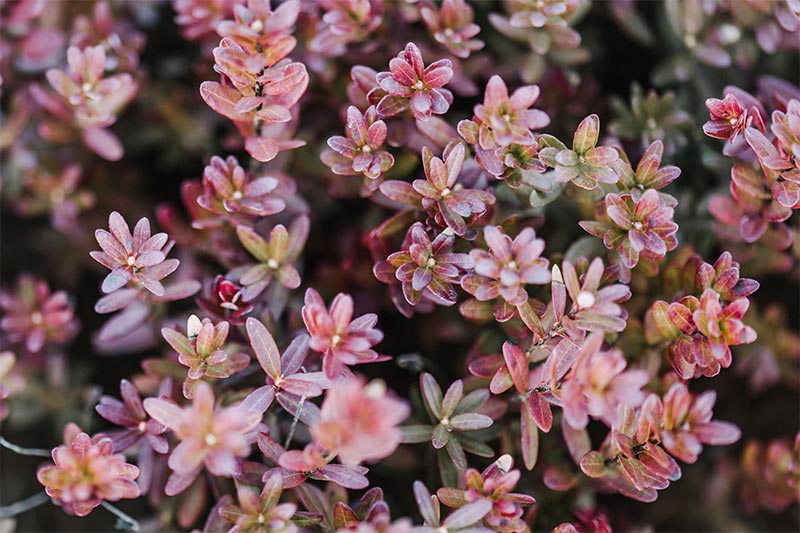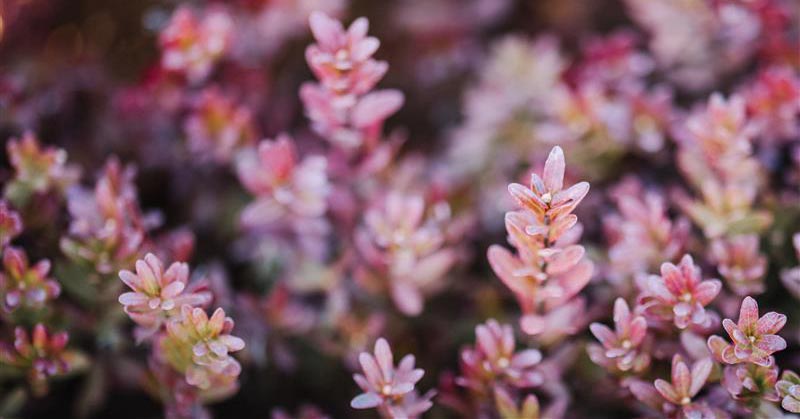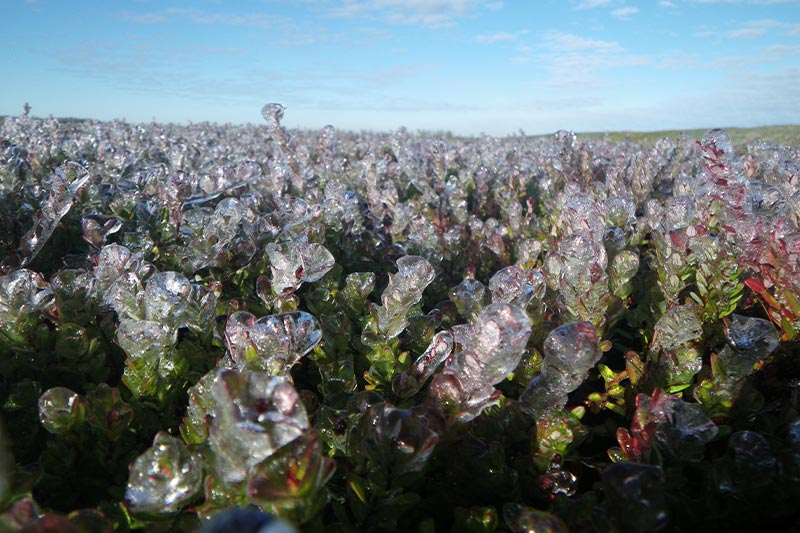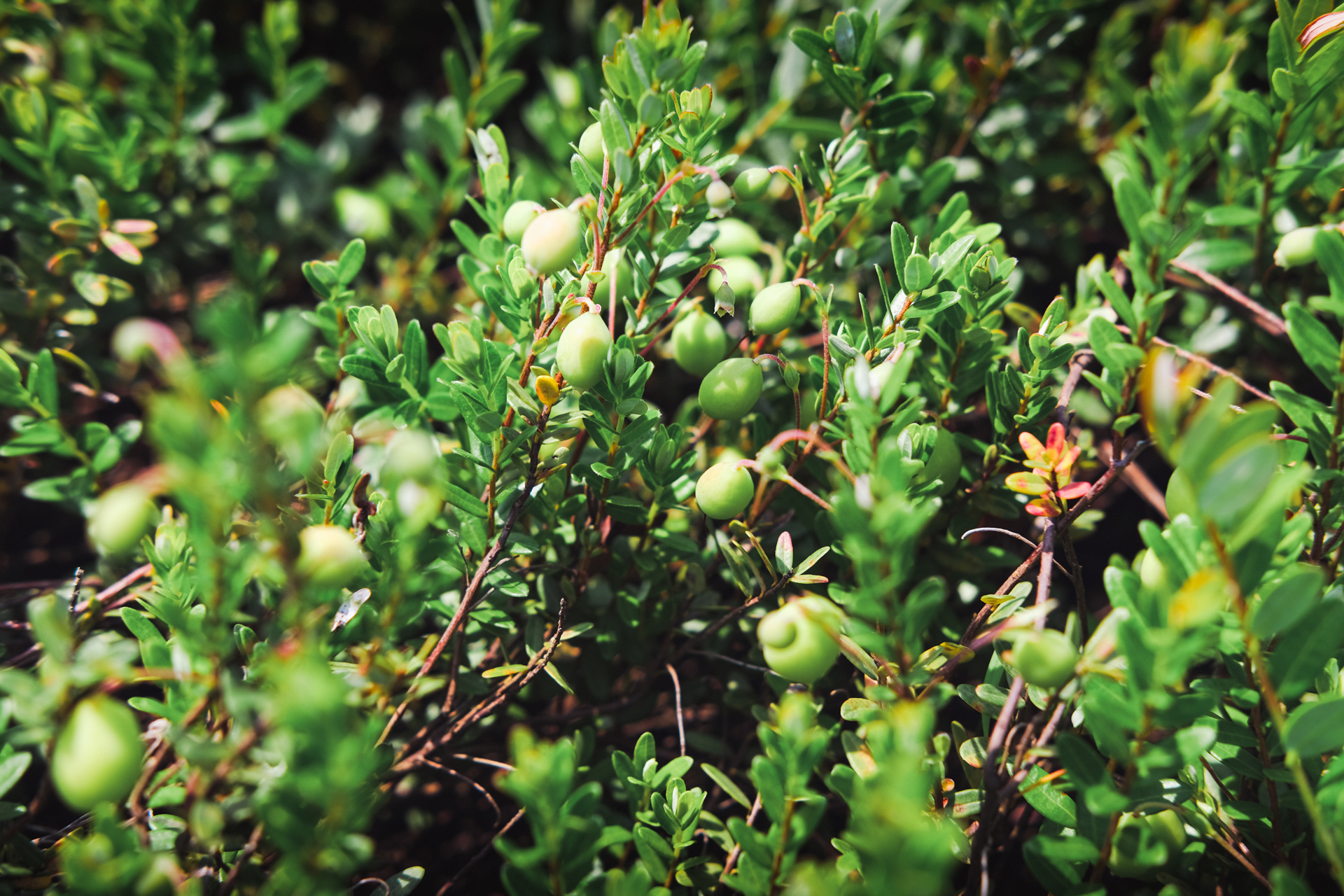
In cranberry cultivation, bud formation is a crucial process that begins well before spring.
Buds form at the end of the previous year's summer, while the plant is still actively growing, around August to September. This stage is crucial, as it influences flowering and, consequently, fruit production the following year.
Once autumn is over, the plant goes into dormancy for the winter. During this period, growers protect the buds by creating a layer of ice using their flood pumps/irrigation system. This ice covers the tips of the plants and acts as a thermal insulator, preventing the buds from being exposed to winter's extreme temperatures, sometimes well below -20°C. This method of protection is essential for the survival of reproductive tissue.
With the return of spring and rising temperatures, the plant wakes up and its systems become active. This is when buds break their winter dormancy and bud expansion begins. This is closely linked to the accumulation of degree days, an agroclimatic indicator that measures the amount of heat received over time. As temperatures rise and degree days accumulate, buds advance in their development.
As they progress, buds undergo several visual transformations:
- They start out small and tight
- They begin to swell slightly and turn white
- They then take on a more swollen, curved shape, known as a “cabbage head”
This evolution precedes the bud elongation phase, which heralds the next flowering.

Bud elongation (and roughneck) is generally observed between May and early June, although this may vary according to local climatic conditions. As the bud expands and produces new growth, it also becomes increasingly vulnerable to cold temperatures. This increased susceptibility to frost represents a major risk for the coming harvest.
That's why cranberry growers need to keep a close eye on the state of bud development in their fields. They rely on both the visual appearance of the buds and the growing degree day data specific to their region to plan their frost protection interventions. The aim is to avoid irreversible damage that could significantly reduce yields.

Alongside monitoring the growth development of the bud, growers take advantage of this period to finalize vine pruning in fields requiring density reduction. Upright stem density is an important indicator in cranberry cultivation, since a too high density can adversely affect yields and encourage the presence of pests.
Towards the end of this same period, integrated pest management and scouting also begins on farms. This is a key step in planning phytosanitary interventions to protect yield potential and maximize berry quality. In addition, weed management work generally begins during this spring transition phase.
Good news for the 2025 harvest: if the weather cooperates, we should see slightly above-average yields in Quebec!
It’s the simple everyday things that make our berries so tender, tasty, healthy and give them the perfect texture. Each parcel of land we farm with care and respect. Each extra day we wait to ensure crops are harvested at peak ripeness. Each minute saved between field and freezer. Each berry perfectly preserved. Each unwanted substance detected and eliminated. And each delicious bite our customers enjoy.




